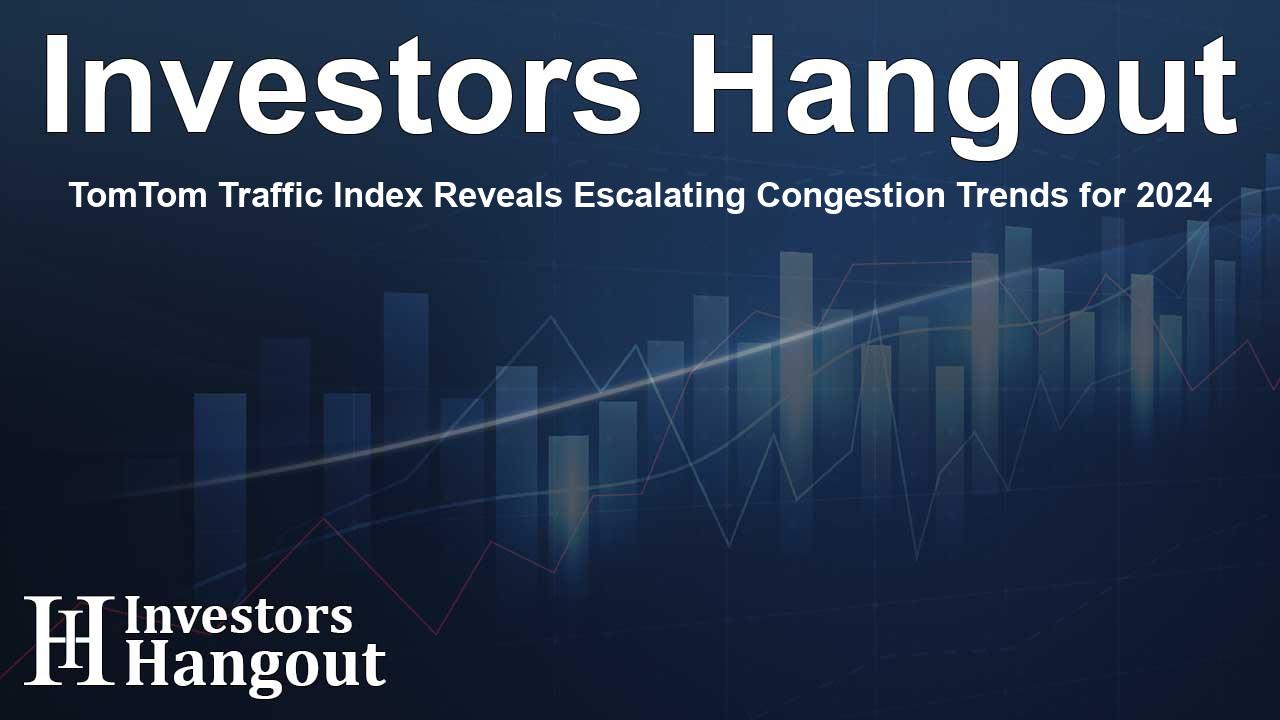TomTom Traffic Index Reveals Escalating Congestion Trends for 2024

Understanding Traffic Congestion Trends in 2024
The latest Traffic Index from TomTom has revealed alarming trends in traffic congestion across numerous cities in the United States. As urban mobility challenges continue, this comprehensive report illustrates that many drivers faced slower speeds and increased congestion compared to previous years. The report emphasizes the importance of addressing these issues through smarter infrastructure and planning.
Key Findings from the TomTom Traffic Index
Increased Traffic Congestion
According to the findings, U.S. cities have seen an overall 9% increase in traffic congestion this year. This increase is significant, considering the various urban areas included in the study. A substantial 76% of the 500 cities analyzed reported lower average speeds, showcasing the broad nature of this congestion crisis.
Slowest Average Speeds in Major Cities
The report notably highlights that cities such as New York, San Francisco, and Honolulu recorded the slowest average speeds in 2024. In fact, a typical 6-mile journey in New York City can take around 30 minutes, with peak times increasing travel times dramatically due to traffic congestion.
Most Congested U.S. Cities
Los Angeles, Honolulu, and Miami top the list of the most congested urban areas. Los Angeles remains the most congested city, with drivers losing an average of 94 hours per year due to peak-hour traffic. This trend serves as a stark reminder of the ongoing struggles with urban congestion in major metropolitan areas.
Effects of E-commerce and Urban Growth
Dynamic Factors Influencing Traffic
Experts point to the growth in e-commerce as a key factor contributing to these traffic issues. As delivery demands have surged, the volume of freight traffic on roads has increased, exacerbating congestion problems. Additionally, outdated infrastructure coupled with population growth further complicates urban mobility.
Implications for Urban Planning
To better manage these congestion levels, Ralf-Peter Schäfer from TomTom stresses the importance of utilizing real-time data from over 600 million connected devices. Such data provides critical insights for city planners aiming to improve traffic flow and develop sustainable transportation solutions.
TomTom's Traffic Index: A Comprehensive Overview
The Traffic Index is more than just a report; it is a vital resource for city planners, policymakers, businesses, and residents. It shows how traffic patterns are evolving, providing the necessary insights to create smarter traffic systems.
Data-Driven Solutions for Congestion
By leveraging data from the Traffic Index, stakeholders can identify trends and develop strategies that directly address congestion. This includes optimizing logistics for businesses, enhancing public transportation, and advancing infrastructure investments. Ultimately, these efforts reflect a commitment to building more accessible and efficient cities.
Looking Ahead: The Future of Urban Mobility
The TomTom Traffic Index reveals significant trends and challenges facing urban areas. As cities grow and evolve, so too must the strategies employed to ensure smoother traffic and better accessibility. The importance of sustainable transportation, along with innovative data usage in planning and managing urban mobility, cannot be overstated.
Frequently Asked Questions
What is the TomTom Traffic Index?
The TomTom Traffic Index is an annual report that provides insights into global traffic trends, congestion levels, and average travel times for various cities.
What cities are experiencing the highest congestion?
Los Angeles, Honolulu, and Miami have been identified as the most congested U.S. cities, according to the 2024 Traffic Index.
How does traffic congestion impact urban mobility?
Traffic congestion leads to slower travel times, higher emissions, and increased frustration for commuters, which ultimately affects the quality of urban life.
What role does e-commerce play in traffic congestion?
The growth of e-commerce has increased freight traffic in urban areas, contributing significantly to traffic congestion during peak hours.
How can city planners use the Traffic Index?
City planners can utilize the Traffic Index data to inform infrastructure improvements, optimize public transportation, and create more sustainable urban environments.
About Investors Hangout
Investors Hangout is a leading online stock forum for financial discussion and learning, offering a wide range of free tools and resources. It draws in traders of all levels, who exchange market knowledge, investigate trading tactics, and keep an eye on industry developments in real time. Featuring financial articles, stock message boards, quotes, charts, company profiles, and live news updates. Through cooperative learning and a wealth of informational resources, it helps users from novices creating their first portfolios to experts honing their techniques. Join Investors Hangout today: https://investorshangout.com/
Disclaimer: The content of this article is solely for general informational purposes only; it does not represent legal, financial, or investment advice. Investors Hangout does not offer financial advice; the author is not a licensed financial advisor. Consult a qualified advisor before making any financial or investment decisions based on this article. The author's interpretation of publicly available data presented here; as a result, they should not be taken as advice to purchase, sell, or hold any securities mentioned or any other investments. If any of the material offered here is inaccurate, please contact us for corrections.